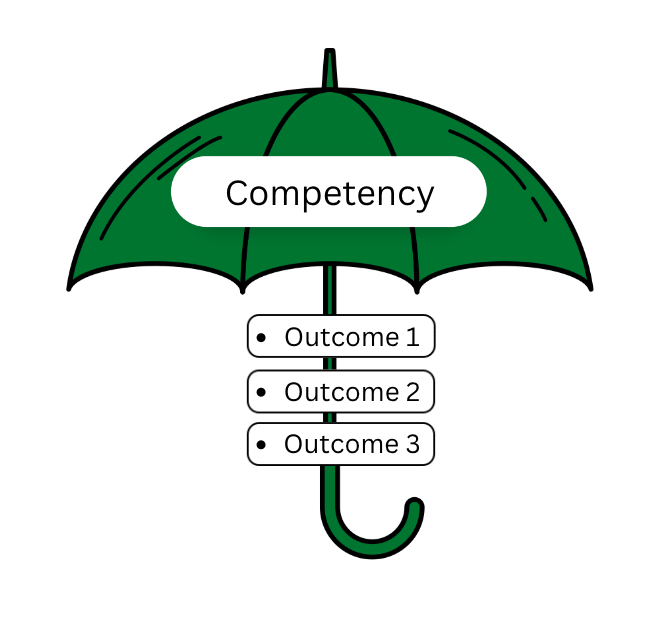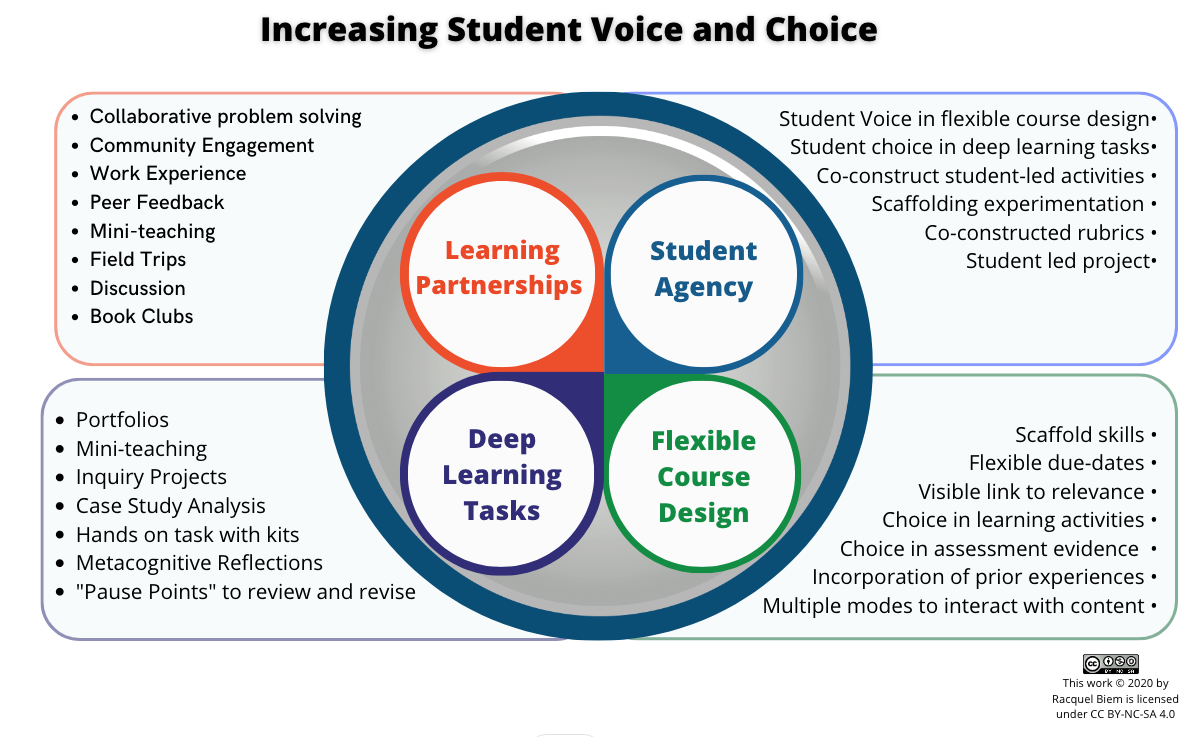Introduction to Teaching Online
If someone asked you “How is online teaching different from face-to-face teaching?”, the first thing you might say is that face-to-face teaching involves real time interaction between students and instructors (synchronous) whereas online teaching happens through a computer, with students typically working through course content like lectures and other materials in their own time (asynchronous).
In an online environment students and instructors access the course at different times and from different places; therefore, it is necessary to deliberately build in opportunities to develop a rapport with students and guide them through the course so that they are successful.
There are a number of strategies that are effective in online courses that can help you foster a sense of community, build good relationships, establish positive, inclusive, and co-operative norms, to help students achieve your course outcomes and learning objectives.
As you plan your online course it is helpful to consider the following;
-
-
- Learners 5. Engagement
- Technology 6. Assessments
- Teaching methods 7. Feedback
- Organization and content delivery 8. Communication
-
The table below looks at these considerations in turn and outlines the actions an Instructor can take and the reasons to take them. For more information follow the links in the table.
| Consideration | Action | Reason |
| 1. Learners
Students may be in other time zones and have other responsibilities |
· Be flexible · Be compassionate · Provide choice – (frequency and mode of participation, assignment options) · Opportunities to practice in low stake environment · Be available to offer support |
·Makes content accessible to all students at any time
· Helps alleviate anxiety
|
| 2. Technology
Online teaching and learning is both enabled by and reliant on technology. Students may be sharing technology with others, may not have reliable internet connection and may have to learn how to use new tools (Canvas) Good practice guidelines for remote-online teaching. |
||
| 3. Teaching methods
There are two main options for teaching online, both of which require access to Canvas: Asynchronous-requires more work from the instructor up front and generally less work throughout. A good Internet connection not as important Synchronous- less work required up front, but workload is spread evenly throughout the semester. Good internet connection required |
· Asynchronous Instructors must prepare and record content in advance
|
· Allows students to access/post at different times ·Promotes deeper reflection ·Course is accessible to students regardless of time or place
|
|
·Synchronous Instructors present their content and conduct activities in a similar way as in a face-to-face classroom |
· Students interact with each other and instructors at the same time, good for community building ·Enhances Instructor presence
|
|
| 4. Organization and content delivery
These are two important aspects of online teaching. When these are done well students can easily navigate the course and know what is expected of them.
Why you should use modules when you are planning your course |
· Organize your course content into modules · Clearly state your outcomes and objectives · Chunk and sequence materials · Distinguish between required and recommended material · Use shorter videos · Bulleted text · Break up content with headings · Let students know how long activities will take so they can budget their time |
·Reduces student cognitive load and makes the course easy to follow
·Easier for students to focus, stay engaged and on track
|
| 5. Engagement
Students who are learning online must navigate courses on their own. Good course structure and organization can help increase student engagement which is important for high quality learning.
Active and Social learning in Canvas Managing and facilitating discussions in Canvas Elaborations of Canvas collaborations Using Canvas New Analytics to see how students are doing in your course |
· Assess/ activate prior knowledge ·Use course analytics to check student engagement ·Student centered learning ·Collaborations and group work · Active and social learning ·Opportunities to practice and get feedback ·Quizzes / self-check |
· Helps students connect new ideas to what they already know, this aids learning. ·Connect with students who are falling behind. · Helps build a community of learners and provides a sense of belonging and support. ·Gives students the opportunity to take responsibility for their learning.
|
| 6. Assessments
Assessments can be used for learning (formative) so that students and instructors can keep track of learning Assessments at the end of a module or a course (summative) can measure what a student has learned, it is an assessment of learning.
Using oral assessments to collect evidence of learning How Canvas supports learning through reflection and growth |
·Provide opportunities for students to practice and get feedback ·Make assessments transparent (rubrics) ·Use authentic assessments ·Use reflections as evidence of learning · Use a combination of Peer, Self and Instructor assessments.
|
·Allows students to practice skills and complete tasks that will help them get better at what you want them to learn ·Helps students stay on track as they know what they are being assessed on ·Authentic assessments help students connect what they are learning to current events. Minimizes the possibility of academic misconduct, require students to apply what they have learned in a new situation, this is the highest level of learning using Blooms taxonomy. ·Provides alternative forms of assessment while teaching remotely and online ·Allows students to develop as learners and keeps instructor workloads manageable (useful for large online classes |
| 7. Feedback
Feedback can be given to students or to instructors. Feedback for students informs them of their learning. Feedback for instructors informs them of their teaching. How Canvas supports learner-centered assessment Utilizing peer feedback in Canvas |
·Timely and actionable feedback ·Audio and video feedback options in Canvas ·Annotations and comments can be given by instructors, peers or TA’s in Canvas ·Consider the timing and frequency of feedback you will provide ·Ask students for feedback about aspects of your course or teaching (SLEQ, Survey Monkey, Anonymous survey, open class discussion) |
·Aids student learning and increases engagement and motivation ·The tone of the feedback is clear to the students ·Helps students improve their work and aids learning ·Timely feedback contributes to an authentic and personalized learning experience. ·Helps instructors make continual improvements to courses and teaching based on student feedback |
| 8. Communication
Online learning can be lonely, isolating, and difficult to follow. Clear communication ensures students know what to expect and feel supported.
|
·Course announcements Written, Video or Audio ·Emails ·Office hours ·Chats ·Synchronous sessions
|
·Keeps students informed about different aspects of the course ·Information presented in different ways makes it accessible to more students and enhances instructor presence ·Students can contact you when they have questions/concerns ·Replying quickly keeps students engaged and on track and helps build trust ·Having multiple ways to connect and communicate with students helps build positive relationships |
Developing your online course may seem like an impossible task, but with some careful consideration and planning you can ensure that your students have a positive learning experience (even if they do not get to see your happy, smiley face on a regular basis).



